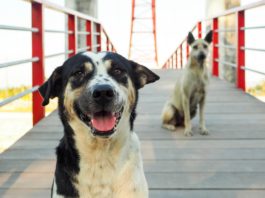Understanding How Your Dog Communicates
the camera captures a scary expression of aggression that wasn't easily visible to the observer on the ground."
What Different Dog Barks Mean
While dogs are primarily body language communicators, they also use their voices to share information with other members of their social group. Compared to their wild brethren, however, our domesticated dogs use their voices far more a tendency we have genetically encouraged. We've created herding breeds, including Shelties, Border Collies, Welsh Corgis, and others, who use their voices when necessary to control their flocks. We've bred scent hounds to give voice when they are on the trail of prey.
When Your Dog Hates Being Touched
not training. Proceed more slowly
Dogs are Body Language Communicators
Dogs are, first and foremost, body language communicators. While they do have a limited ability to communicate vocally, they are much more articulate with their subtle body movements, and much more intuitively able to understand ours. As Patricia McConnell says in the introduction of her excellent book, The Other End of the Leash, All dogs are brilliant at perceiving the slightest movement that we make
Dogs Communicate Well Both Verbally and With Body Language
You may not want to hear it, but your dog is trying to tell you something. We’ll help you figure out WHY he is barking and how to get him to stop. Who says dogs can’t talk? In less than 30 minutes, I had been treated to five audible canine communications, each with a clear and distinct meaning and purpose. While dogs are, indeed, exquisite body language communicators, they are no slouch in the vocal communication department.
How to Safely Break Up a Dog Fight
If you've ever been present when a dogfight broke out, you know how dangerous it can be for everyone concerned. I've lost track of how many times we've said this, but as always, prevention beats cure. It is imperative that you manage and train your own canine family to minimize the risk of serious dogfights. Identify situations that are likely to light the dogfight fuse, such as fence-fighting or resource guarding, and figure out how to avoid them and/or modify the behavior that causes them.
A Dog’s Calming Signals
Pups who are raised in a litter for the first eight weeks of their lives (and in the presence of older dogs) have the advantage of learning skills from their siblings and elders. They learn to accept the leadership of a just leader. They learn simple, but crucially important lessons such as bite inhibition. They come to understand when play is too rough or inappropriate. And they have the opportunity to learn the language skills that will enable them to be peaceful pack members.
Telepathic Communication With Your Dog
Have you ever looked up suddenly and seen your dog staring at you intensely, longingly – a look that grows no less pleading when you offer treats, a walk, or a scratch behind the ears? Or perhaps you’ve seen your dog leap up at some seemingly nonexistent noise, sniffing and whining for no reason you can imagine. Have you wished that you could know what your animal wants, understand what he’s thinking? Or have you ever wondered, when your dog mysteriously disappears at bath time, if he knows what you’re thinking?













